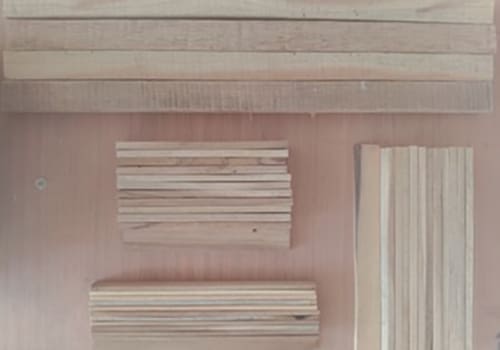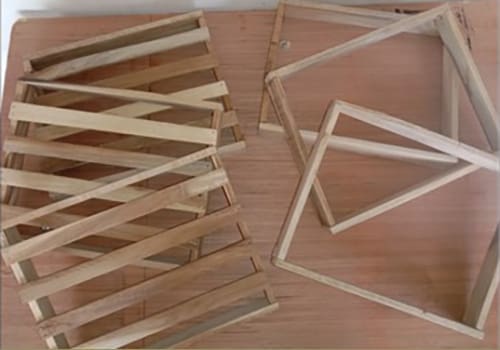I have always tried to keep my kitchen well organized for creating amazing stuff, but a whole lot of things make me mad.
My kitchen counter and maybe yours too are always taken up by some kitchen utensils, grinders, fruits, or veggies. This makes it challenging for me to work efficiently there.
Then, I began to explore many ideas to keep myself productive and be time-efficient in the kitchen. I rearranged almost everything in my kitchen. And when I arrived to organize my fruits and veggies, I was greatly confused.
Foremost, I thought of buying a corner bin for them but they were quite pricey. Though that was a must for my kitchen. So, I decided to DIY one for myself. And I could not explain how affordable and wonderful it looks.
Why Have a Vegetable Bin?
Before we jump into building the vegetable bin, let us know why you should have or might require one?
There are mainly three reasons for this-
- You want your kitchen to be well arranged and have a clean counter.
- You like your fruits and veggies to be kept separately and have a longer life.
Also, it is required to keep them apart as some fruits and vegetables are ethylene(a ripening hormone) producers and others are ethylene sensitive.
To understand, apples are high ethylene producers and their shelflife is short, whereas potatoes are low ethylene producers and have a longer shelflife. So, when they are kept together, apples make the potatoes go bad early. Therefore, it is very much required to keep several vegetables and fruits separated.
Related: 11 Food Storage Myths
- The third reason is related to the second one. Sometimes, you might want to ripen certain fruits or veggies. Maybe you bought some raw bananas and want them to ripen fast. Then you would keep them with the apples.
It is important to note that bananas are also a high ethylene-producing fruit.
Now, since you have understood the reason why you should have a vegetable bin.
So, let us begin to dig into this- $5 DIY Vegetable Bin Project.
The required materials are so readily available and maybe you have all of them at your home. I had some old wooden crates, so I took the sticks from them and tried to reuse the nails as much as I could. Likewise, the tools are not complicated to use.
You may ask your friends or family members to help you with this project. This project was created by me and my younger brother together. And it was great fun with him.
So, if you are looking forward to a great activity for your younger ones you should definitely try this project.
Materials Required
- Wood pieces{(60 x 4 x 2), (28 x 3 x 1), (21 x 3 x 1), (28 x 2 x 0.5)}*lenghts in cm.
- Hacksaw blade.
- Hammer
- Nails
- Wood glue
- Sandpaper
Now, since you have collected all the instructed items, let us dig into the building process. Read each step carefully and be mindful not to disorder the steps. Follow as you go.
Steps for Vegetable Bin
Step 1:
- Take wooden pieces and cut them into four equal lengths of (60 x 4 x 2) cm.
- Cut wooden sticks into twelve pieces of length (28 x 3 x 1) cm.
- Cut wooden sticks into twelve pieces of length (21 x 3 x 1) cm.
- And cut fine wooden sticks into twelve pieces of length (28 x 2 x 0.5)
- Finally, sand all the pieces with the sandpaper.

Step 2:
- Now, make a frame with sticks of lengths (28 x 3 x 1) and (21 x 3 x 1) using wood glue and nails.

- Then, make a basket by attaching the fine sticks (28 x 2 x 0.5) to one of the sides of the frame.

- Follow the above steps to make three baskets and three frames in total.

Step 3:
- Now take the long wooden pieces (60 x 4 x 2) and attach one side of the basket(created in the previous step) to these long pieces. Keep the basket 5 cm above the bottom of these pieces.

- Keep a 2 cm gap from the attached basket and fix a frame to the same long wooden piece.

- Repeat this procedure for the other two baskets and frames.

Step 4:
- Next, you need to attach the other two longer pieces (60 x 4 x 2) to the setup that we have made so far.

- Further, you can stain the bin or you may use any paint to paint it.
- I used the wood polish to finish it.

Now, when you have finished building your project, let us know the correct way to use the vegetable bin and other related tips and tricks to be efficient with it.
What Are The Best Vegetables to Store?
As I have mentioned the reason why certain vegetables and fruits should be kept separately. Further, let me tell you the best vegetables that can be stored in a vegetable bin without much supervision.
Here are the best vegetables that should always be in the vegetable basket or the bin:
Potato, sweet potato onion, and garlic are the top vegetables that last longer at room temperature. But potato and onions should be kept apart if you want to store them for a longer time. Then comes the ginger, pumpkin, basil(in water), cucumber, eggplant, and peppers. Tomatoes when kept in the refrigerator lose their flavor. So, they should also be kept in the bin and can last for more than a week.
If we talk about fruits then pears, peaches, bananas, mangoes, avocados, and citrus fruits can be kept in the bin until they ripen and after that, they can be refrigerated, if needed. Apart from these fruits pomegranate, melons, papaya, and pineapple should be stored in the bin.
What Should Never be Stored?
Several vegetables should never be stored in the bin until you are planning to use them within a day or two.
To begin with, green leafy vegetables like lettuce, spinach, kale, chard, and collard among others should never be stored in the bin. Instead, they should not be washed at all and should be zip-locked and kept in the refrigerator.
Other vegetables such as greens beans, peas, mushrooms, herbs (except basil), sprouts, cauliflower, cabbage, broccoli, radish, and green onions should not be stored in the vegetable bin.
Apples, avocados, figs, apricots, and ripen bananas are the fruits that should never be in the vegetable bin, they should always be stored separately in the refrigerator.
What Vegetables Should Be Stored Together?
It is important to note that ethylene sensitivity and productivity of both vegetables and fruits should be well checked before keeping them together either in the bin or in the refrigerator.
Also, vegetables and fruits can be kept together if you do not want to store them for too long and are going to utilize them within a couple of days.
So, here are some vegetable groups that can be stored together in the vegetable bin for a longer shelflife-
- Onion and garlic.
- Potato and sweet potato.
- Tomato, cucumber, and basil. These can be kept in the water for keeping them from dehydrating.
- Winter squashes can be kept with any group above.
With this let me sign off and I hope that you would surely try out this DIY project and it would come out as per your expectations.
You may also like:
How To Raise Quail And Why You Should Do It
How To Store Food Without Electricity That Can Last Up To A Year (Video)
50 Tips From the Great Depression
Survival DIY Projects You Can Start on Your Property Right Now









This bin looks so pretty. And the project cost you mentioned is making me mad.
I always wanted to make a bin. Thanks for your guidance.
It looks good.